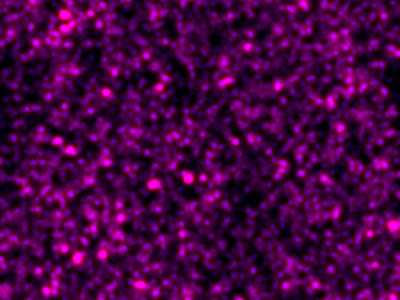Deep surveys

With its high mapping speed and dual wavelength observations, NIKA2 provides a new view of the distant Universe. Mapping large areas at a depth close to the confusion limit, it detects hundreds of dust-obscured optically-faint galaxies during their major episodes of formation in the early universe.
Active star formation in dusty, optically obscured galaxies manifests itself in far-infrared to millimeter wavelength observations. The key feature that makes submm/mm-wave observations of distant galaxies fascinating is the ability to sample the spectral energy distribution (SED) of a target galaxy at wavelengths for which the SED is a strongly increasing function of frequency. This ensures that distant galaxies are observed at a rest-frame wavelength closer to the peak of their SED. There is thus a strong, negative K correction, which leads to high-redshift galaxies being relatively easy to detect at submm/mm wavelengths as compared with their low-redshift counterparts. In the submm/mm, the flux density from galaxies at z > 1.5 stops to decline with the inverse square of distance ; it then remains approximately constant with increasing redshift.
Observing extragalactic fields very deeply with NIKA2 is giving :
- A complete view of star formation rate (SFR) at high redshift : At present, rest-frame UV selected galaxy populations have been used to study the cosmic SFR history of the Universe at z > 4. However, the UV selection prevents the detection of the massive dusty star-forming population, and hence is strongly biased. A complete census on the SFR history of galaxies is therefore missing and will be missing as long as no millimeter survey of the z>4 Universe will have been analysed. This is one of the major goals of NIKA2 deep field observations.
- New insights on galaxy formation and evolution : NIKA2 observations will be critical for our understanding of galaxy formation and evolution, being particularly sensitive to normal galaxies at z > 4, of which there are still very few known. It will also provide us with the evolutionary history of the galaxy populations that dominate the integrated FIR—mm extragalactic background emission.
- The star formation / dark matter halo mass connection : The clustering of NIKA2 galaxies can give particularly strong constraints on models for the evolution of large-scale structures, giving the link between star formation and dark-mater halos mass.
Acronyms :
mm : millimeter — SED : Spectral Energy Distribution — SFR : Star Formation Rate — UV : Ultra-violet — FIR : Far-Infrared.
Mis à jour le 22 novembre 2023


